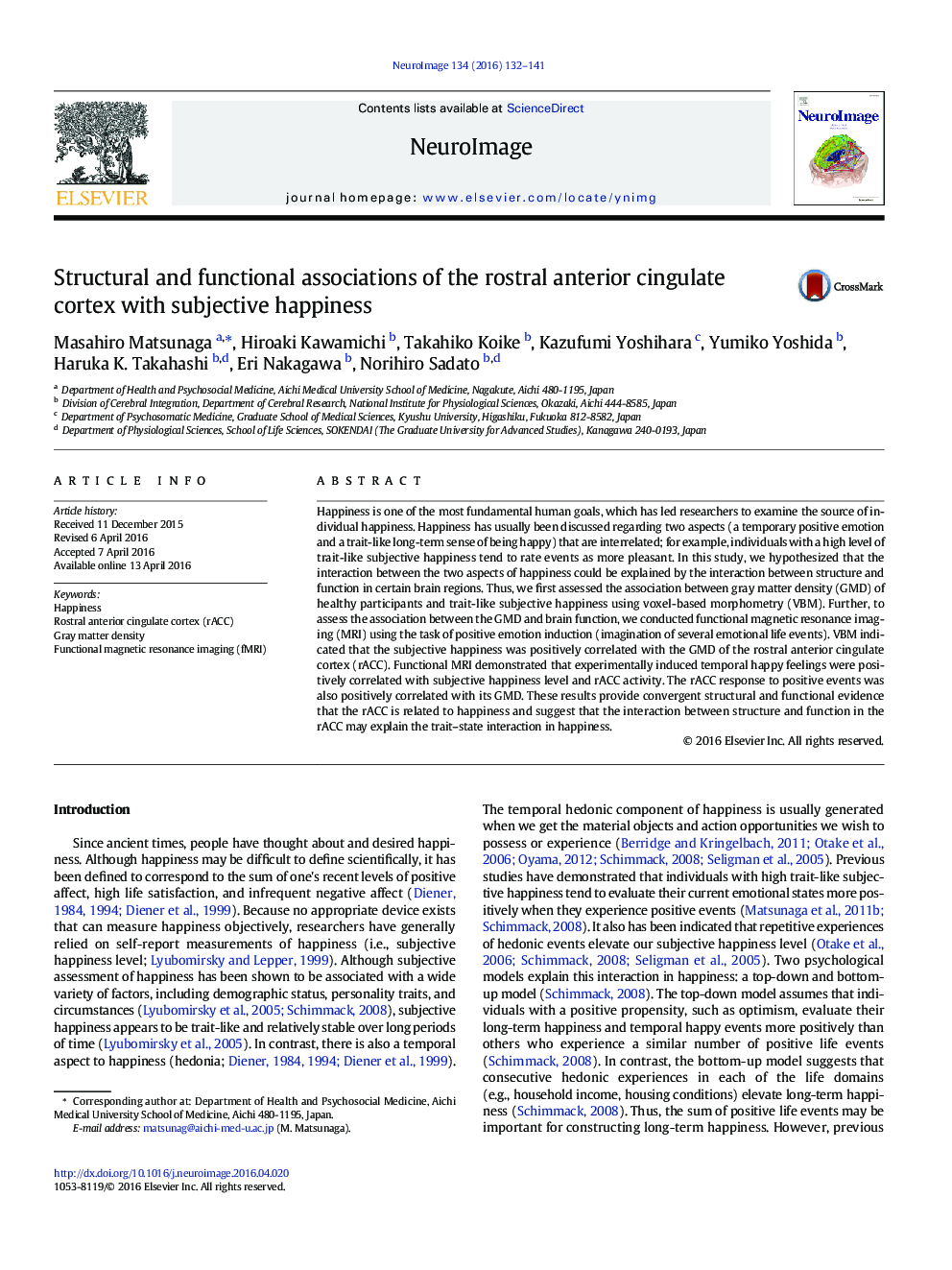| کد مقاله | کد نشریه | سال انتشار | مقاله انگلیسی | نسخه تمام متن |
|---|---|---|---|---|
| 6023300 | 1580874 | 2016 | 10 صفحه PDF | دانلود رایگان |
- We investigated neural correlates of subjective happiness using MRI.
- Trait happiness was positively correlated with GMD of the rACC.
- State happiness was positively correlated with rACC activation.
- Structural-functional interactions could explain the trait-state interactions.
Happiness is one of the most fundamental human goals, which has led researchers to examine the source of individual happiness. Happiness has usually been discussed regarding two aspects (a temporary positive emotion and a trait-like long-term sense of being happy) that are interrelated; for example, individuals with a high level of trait-like subjective happiness tend to rate events as more pleasant. In this study, we hypothesized that the interaction between the two aspects of happiness could be explained by the interaction between structure and function in certain brain regions. Thus, we first assessed the association between gray matter density (GMD) of healthy participants and trait-like subjective happiness using voxel-based morphometry (VBM). Further, to assess the association between the GMD and brain function, we conducted functional magnetic resonance imaging (MRI) using the task of positive emotion induction (imagination of several emotional life events). VBM indicated that the subjective happiness was positively correlated with the GMD of the rostral anterior cingulate cortex (rACC). Functional MRI demonstrated that experimentally induced temporal happy feelings were positively correlated with subjective happiness level and rACC activity. The rACC response to positive events was also positively correlated with its GMD. These results provide convergent structural and functional evidence that the rACC is related to happiness and suggest that the interaction between structure and function in the rACC may explain the trait-state interaction in happiness.
Journal: NeuroImage - Volume 134, 1 July 2016, Pages 132-141
